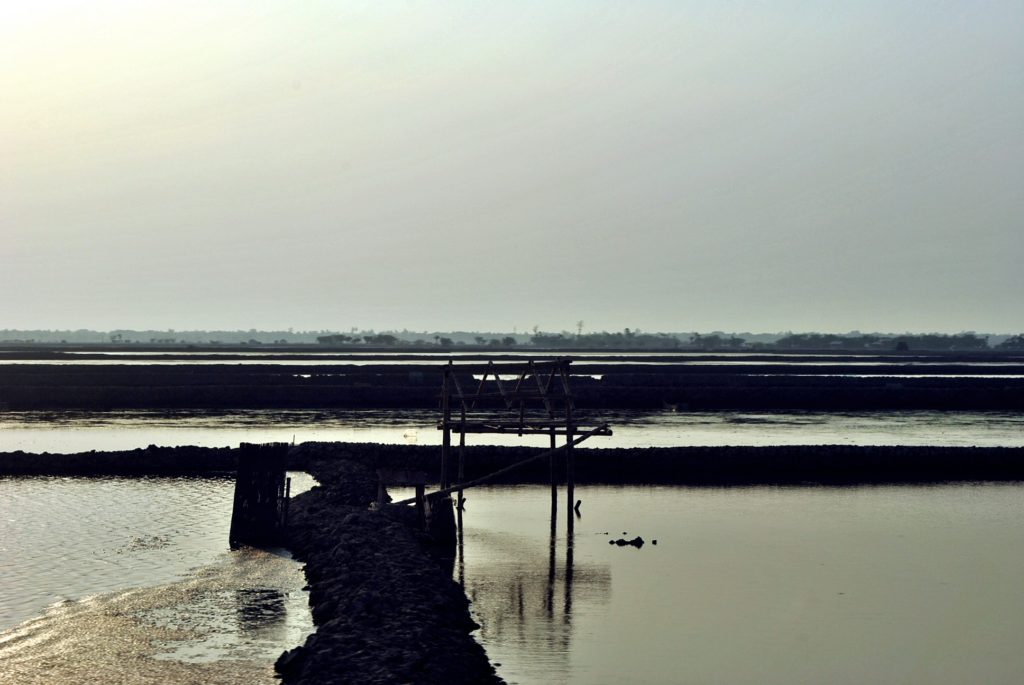
July 3, 2017
Comment on Violence, Mobility, and the Borders of Bengal
by Jason Cons, Department of Anthropology, University of Texas at Austin
Read the original article here.
Rimple Mehta’s ethnographic exploration of the violence of mobility is a critical intervention in studies of migration across the India-Bangladesh border and of border crossing more generally. Through a study of Bangladeshi women in correctional homes in Kolkata, she foregrounds the ways that migrants crossing this border are exposed to multiple forms of gendered violence. Moreover, unlike much of the rapidly expanding body of work on the India-Bangladesh, she follows the trajectory of this violence outwards from the border—tracing it from Ready Made Garment factories in Dhaka to correctional homes in Kolkata and back across the border again. Thus, we learn from her work not only about the precariousness of border crossing, but also the violence of detention and return. In recent years, scholarship in the US and Europe has increasingly turned its attention to what Nicholas De Genova and Nathalie Peutz (2010) have provocatively called “the deportation regime”. Mehta’s study reminds us that we must attend to the particularities of such regimes in other spaces where borders purport to curtail movement between radically unequal states.
Mehta’s work raises questions that scholars of borders, of migration, and of violence need to consider with more care. One of these is the need for a better understanding of violence and its specific articulations with gender. Mehta’s work shows that border crossing is an act fraught with gendered precarity. That said, it remains less clear how we should understand and differentiate these specific forms of violence in the context of the broader violence of borders (Jones 2016). As the Human Rights Watch study on shootings at the India-Bangladesh border that she cites makes clear, the vast majority of those shot-on-sight by India’s Border Security Forces are men. Moreover, in the tragic case of Felani Khatun that Mehta raises at the outset of the paper, there is ample evidence to suggest that she was shot simply because she was seen as a border crosser (moving from India back into Bangladesh). There is less evidence to suggest that she was shot specifically because she was a woman. How then might we better trace and understand the relationship between gender, mobility, and violence at this border?
As the work of Malini Sur (2007), Sahana Ghosh (2014), and Delwar Hussain (2013) has recently shown, gender plays an intimate role in mediating mobility at the India-Bangladesh border. Women crossing this border are certainly exposed to often horrific forms of violence. Yet, gender also plays a critical role in enabling certain kinds of movements even as it restricts others. This suggests that greater attention is needed to the micropolitics of crossing and the ways that bodies of both women and men are exposed to regimes of violent regulation.
Perhaps the most exciting aspect of Mehta’s paper is that it furthers the project of restoring voice to women who are often systematically reduced to statistics or glossed as abject victims in reporting on human trafficking. In the narratives of women in detention centers in Kolkata, we can begin to glimpse the ways that women who move across this border make difficult choices in conditions very much not of their own choosing. As Diana Tietjens Meyers (2011) has argued, much of the literature on trafficking is trapped in a two-victim paradigm—unable to represent women as anything other than abject victims or heroic resisters of their conditions. Mehta’s paper shows the realities to be much more complicated. It is an ethnographically rich exploration of what Meyers calls “burdened agency.” Through this reading, we begin to understand the often painful decisions that women make that expose them to often horrific forms of violence. Moreover, it forces us to reckon with these decisions as choices. Her work thus demands that we confront the question of agency and humanity in mobility even as it exposes the dehumanizing technologies and techniques of violence in border crossing and detention.
De Genova, Nicholas and Nathalie Peutz (eds). 2010. The Deportation Regime: Sovereignty, Space, and the Freedom of Movement. Durham: Duke University Press.
Ghosh, Sahana. 2014. “Anti-Trafficking and Its Discontents: Women’s Migrations and Work in an Indian Borderland.” Gender, Place and Culture: A Journal of Feminist Geography. 1220-1235.
Hussain, Delwar. 2013. Boundaries Undermined: The Ruins of Progress on the Bangladesh-India Border. London: C. Hurst & Co.
Jones, Reece. 2016. Violent Borders: Refugees and the Right to Move. London and New York: Verso.
Meyers, Diana Tietjens. 2011. “Two Victim Paradigms and the Problem of ‘Impure’ Victims.” Humanity. 2(2). 255-275.
Sur, Malini. 2007. “Bamboo Baskets and Barricades: Gendered Landscapes at the India-Bangladesh Border.” In Transnational Flows and Permissive Polities: Ethnographies of Human Mobilities in Asia. Amsterdam: Amsterdam University Press. 127-150.

